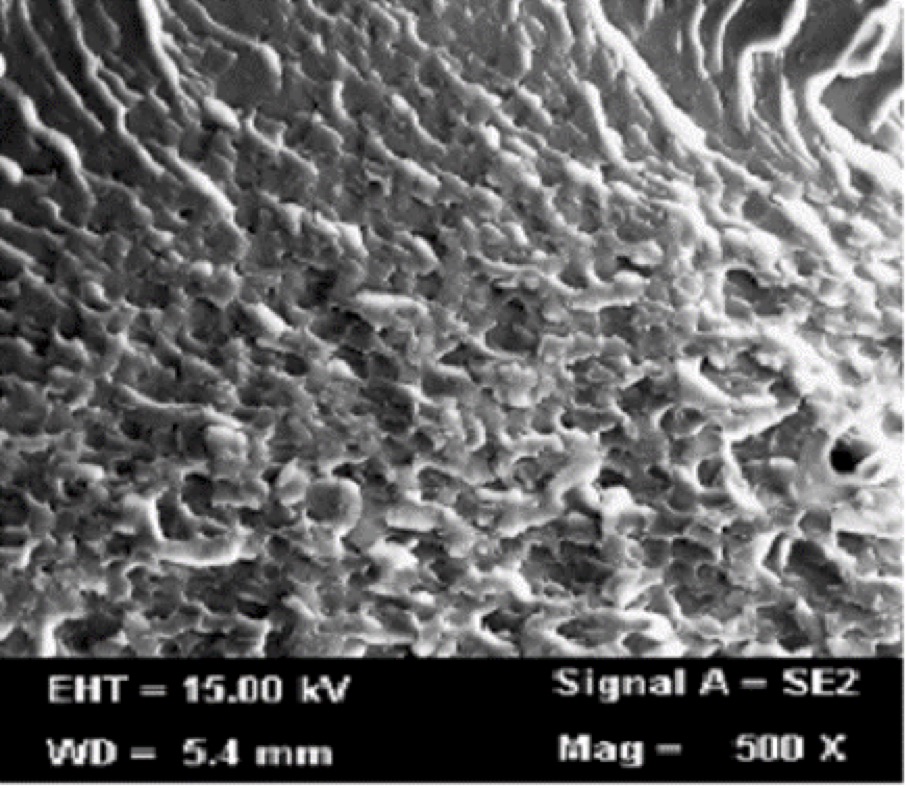
Penyediaan dan pencirian membran nanokomposit poli(akrilamida-ko-etilmetakrilat) dan potensinya sebagai sensor kimia
Abstract
Keywords
Full Text:
PDFReferences
Logothetidis, S. 2012. Nanostructured Materials and Their Applications, NanoScience and Technology. Berlin. Springer.
Nesrinne, S., Djamel, A.2013. Synthesis, characterization and rheological behavior of pH sensitive poly (acrylamide-co-acrylic acid) hydrogels. Arabian Journal of Chemistry, 1878-5352.
Pei, Y., Zhao, L., Du, G., Li, N., Xu, K. & Yang, H. 2016. Investigation of the degradation and stability of acrylamide-based polymers in acid solution: Functional monomer modified polyacrylamide. Petroleum, 4–12
Huang, S.Y., Lipp, D. W. and Farinato, R. S. 2001. Acrylamide Polymers. Encyclopedia of Polymer Science and Technology. 1.
Perez, J. P. H., Lopez-Cabarcos, E. & Lopez-Ruiz, B. 2006. The application of methacrylate-based polymers to enzyme biosensors. Biomolecular Engineering, 23(5):233–245.
Ni, K., Chen, L., Lu, G. 2008. Synthesis of silver nanowires with different aspect rations as alcohol-tolerant catalysts for oxygen electroreduction. Electrochemistry Communications, 10:1027-1030.
Rahman, N.A, Hanifah, S.A, Zaini, A.M.N, & Ahmad, A. 2015. Modification of Chitosan for Preparation of Poly (N-isopropylacrylamide / O-nitrochitosan) Interpenetrating Polymer Network. Sains Malaysiana, 44(7):995–1001.
Kurowska, E., Brzozka, A., Jarosz, M., Sulka, G. D. & Jaskuła, M. 2013. Silver nanowire array sensor for sensitive and rapid detection of H2O2. Electrochimica Acta, 104: 439–447.
Rozi, N., Hanifah, S. A., Heng, L. Y., Shyuan, L. K. 2016. Characterization of Ultraviolet-Photocured Acrylamide Based Polymer. American Institute of Physics, 1-5.
Hutcheon, G.A., Messiou, C., Wyre, R.M., Davies, M.C., Downes, S. 2001. Water absorption and surface properties of novel poly(ethylmethacrylate) polymer systems for use in bone and cartilage repair. Biomaterials, 22:667-676
Duraisamy, N., Hong, S., Choi, K. 2013. Deposition and characterization of silver nanowires embedded PEDOT: PSS thin films via electrohydrodynamic atomization. Chemical Engineering Journal, 225:887-894.
Hu, W., Niu, X., Li, L., Yun, S., Yu, Z., Pei, Q. 2012. Intrinsically stretchable transparent electrodes based on silver-nanowire-crosslinked-polyacrylate composites. Nanotechnology, 23:1-9
Cannes, C., Kanoufi, F., Bard, A.J. 2003. Cyclic voltammetry and scanning electrochemical microscopy of ferrocenemethanol at monolayer and bilayer-monified gold electrodes. Journal of Electroanalytical Chemistry, 547:83-91.
Choi, S., Kim, S., Jang, J., Lee, J. & Kim, I. 2016. Silver Nanowire Embedded Colorless Polyimide Heater for Wearable Chemical Sensors: Improved Reversible Reaction Kinetics of Optically Reduced Graphene Oxide. Small :1–10
Refbacks
- There are currently no refbacks.
Call for Submissions
We welcome submissions for the coming issue that will be officially published in March 2022. We are committed to providing results of reviewing within two weeks, and publishing the paper within one month from the submission date (subjected to responses by authors). This means accepted papers will be available online even before the issue is published officially.
Publons Partners
Journal of Polymer Science and Technology (JPST) is now one of Publons Partners. This means biodata of reviewers in Publons will be automatically updated once reviewing on articles submitted to JPST is completed (subjected to terms and conditions).
How to promote journal articles
Promoting your journal article is imperative to maximise the exposure, enhance the discoverability and increase engagement with readers and other academics. Together with the publisher, as an author, you can help to promote your newly published articles via the following:
1) Institutional webpage.
Provide the link of your latest article in your institutional website. The webpage visitors who view your profile will be able to see your latest research and publications.
2) Social media.
The rise of the social media has also profoundly affected the publishing fraternity. More and more users have chosen the social media platforms as a way of sharing. Social media sharing helps foster convenient dissemination of information, which can be achieved within a short time. You can share your article in major online social media platforms including Twitter, Facebook, LinkedIn and so on.
3) Utilise scholarly networking and reference platforms.
A scholarly or academic networking platforms such as Academia.edu, MyNetResearch, ResearchGate, Mendeley and so on are indeed useful as they help bring scholars of common areas of expertise close together.
4) Press Releases.
If your article involves a new, significant or important discovery, consider linking up with media organisations for a press release. This brings your work to the mainstream media.
5) Blog.
If you keep a personal blog, you can get your blog readers updated with the list of your most recently published articles and the development in your area of research. Linking your article in your personal blog can vastly enhance the discoverability. Discuss briefly about the article and how the users might benefit from it.
6) Add to reading list or assignment.
Add your article (or the journal your article is published) as essential reading to your students. You may also create related assignments, e.g. review of the article, or have them discussed about the write up in class.
7) Add to your signature.
Announce your latest publication underneath your signature. Provide a link where the article can be downloaded/viewed.
